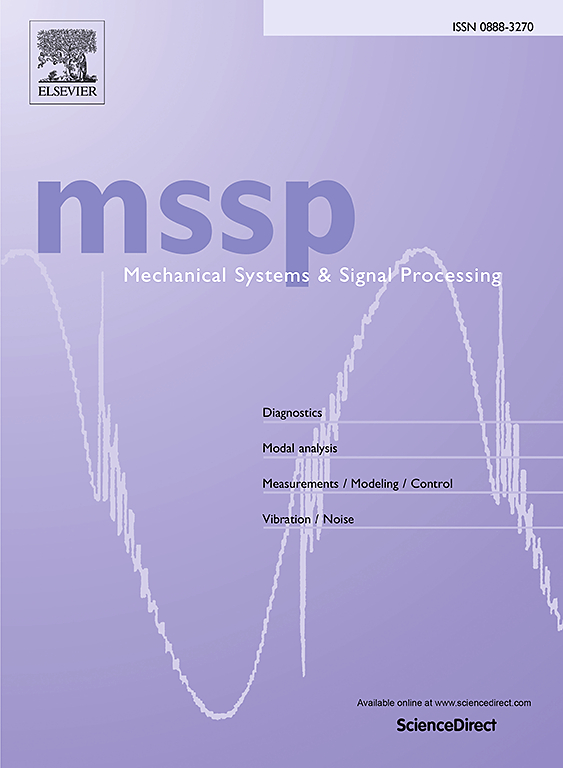An ultrasensitive self-powered smart bearing pedestal with fault locating capability
IF 7.9
1区 工程技术
Q1 ENGINEERING, MECHANICAL
引用次数: 0
Abstract
For bearing condition monitoring, commonly used measuring points on the casing suffer from low signal-to-noise ratios and strong interference. These issues are expected to be addressed through embedded wireless sensors. To tackle the challenges faced by wireless sensor nodes in terms of energy supply and to enhance their intelligence level, this paper proposes a self-powered smart bearing pedestal with ultrasensitive sensing capabilities. The proposed bearing pedestal features a segmented arrangement of piezoelectric stacks integrated into the structure, utilizing the varying contact load generated by rolling elements. To evaluate the operating characteristics of the smart bearing pedestal, an electromechanical coupling dynamic model is developed, upon which dynamic analysis is carried out for both healthy and faulty bearings. Subsequently, a smart bearing pedestal prototype is manufactured and rotor tests are conducted to further investigate the performance of the proposed smart bearing pedestal. It is observed that the test data aligns well with the simulation results. The smart bearing pedestal has condition monitoring and fault detecting capabilities of high sensitivity, allowing it to sense bearing rotational speed and identify faults of different bearing components, as well as localize the defects on the outer ring. Additionally, it exhibits excellent power supply performance, with a quite low internal resistance of approximately 100 Ω, and is capable of generating an electrical output of 525.9 μW at the rotating speed of 1800 rpm. This research provides a new solution for smart bearing support systems, contributing to intelligent sensing in rotating machinery.
一种具有故障定位能力的超灵敏自供电智能轴承座
在轴承状态监测中,常用的机壳测点信噪比低,干扰强。这些问题有望通过嵌入式无线传感器得到解决。为了解决无线传感器节点在能量供应方面面临的挑战,提高无线传感器节点的智能化水平,本文提出了一种具有超灵敏传感能力的自供电智能轴承座。所提出的轴承座具有集成到结构中的压电堆的分段排列,利用滚动元件产生的不同接触载荷。为了评估智能轴承座的运行特性,建立了一个机电耦合动力学模型,在此基础上对健康轴承和故障轴承进行了动态分析。随后,制造了智能轴承座样机,并进行了转子试验,以进一步研究所提出的智能轴承座的性能。试验数据与仿真结果吻合较好。智能轴承座具有高灵敏度的状态监测和故障检测能力,可以感知轴承转速,识别不同轴承部件的故障,并将缺陷定位在外圈上。此外,它还具有优异的供电性能,具有相当低的内阻,约为100 Ω,并且能够在1800 rpm的转速下产生525.9 μW的电输出。该研究为智能轴承支撑系统提供了一种新的解决方案,有助于实现旋转机械的智能传感。
本文章由计算机程序翻译,如有差异,请以英文原文为准。
求助全文
约1分钟内获得全文
求助全文
来源期刊

Mechanical Systems and Signal Processing
工程技术-工程:机械
CiteScore
14.80
自引率
13.10%
发文量
1183
审稿时长
5.4 months
期刊介绍:
Journal Name: Mechanical Systems and Signal Processing (MSSP)
Interdisciplinary Focus:
Mechanical, Aerospace, and Civil Engineering
Purpose:Reporting scientific advancements of the highest quality
Arising from new techniques in sensing, instrumentation, signal processing, modelling, and control of dynamic systems
 求助内容:
求助内容: 应助结果提醒方式:
应助结果提醒方式:


